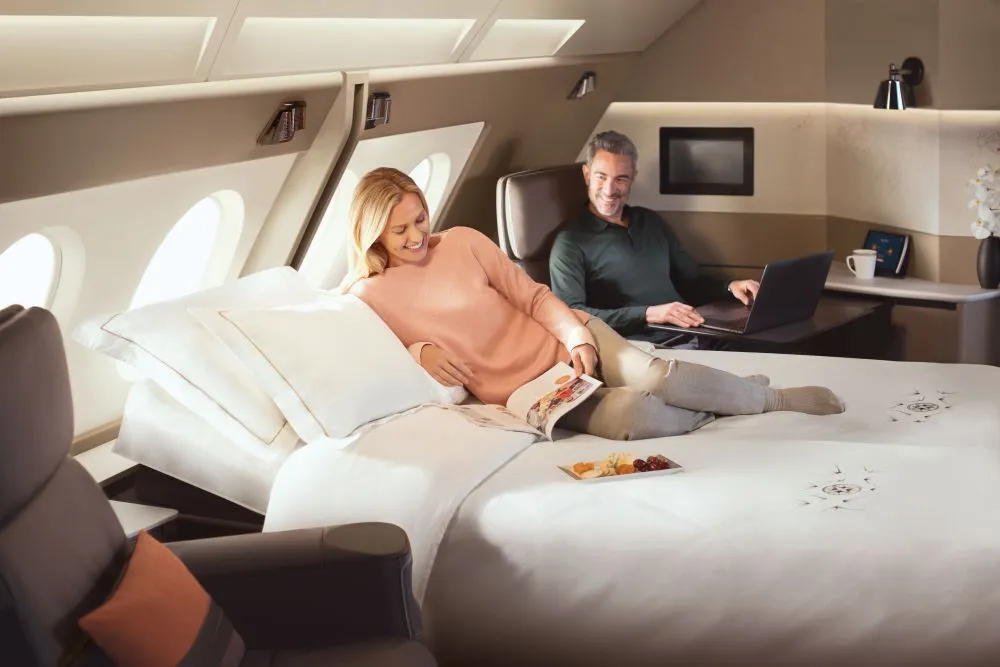
With even small hotels offering spa services, traditional healing modalities getting a UNESCO nod, and airlines teaming up with wellness companies, it is not surprising that wellness tourism is rapidly becoming a major growth sector within the global industry.
While spas and wellness centres have been popular since ancient times, the global focus on health and wellbeing in the post-pandemic era has made key industry players rethink their amenities, thereby revamping them while drawing in more potential customers in the process.
Experts at Statista point out that the global wellness industry was worth around US$6.32 trillion as of end-2023; consequently, the wellness tourism subsector had an estimated worth of US$830 billion at around the same time.
As today's travellers become more conscious about their personal health and wellbeing, the travel and hospitality sectors seek to find ways by which they can accommodate specific requirements and ensure good flights, stays, and trips for their patrons.

This map from the Global Wellness Institute shows which modalities are most popular in different parts of the world
A major difference between wellness and medical tourism
The thing about wellness tourism is that it should never be confused with medical tourism.
According to the Global Wellness Institute (GWI), wellness tourism is defined as any form of travel related to the enhancement or maintenance of one’s personal wellbeing.
As such, it pertains to experiential travel that enables individuals to find ways by which to improve their health through diet, exercise, as well as various forms of guided relaxation.
Medical tourism, on the other hand, refers to travelling to other locations within one’s home country or overseas destinations to receive treatment for certain critical illnesses, have life-saving surgery done, or even get in-patient reconstructive or cosmetic procedures to improve their appearance.
Also, wellness tourism does not involve stays in actual hospitals the way those who engage in medical tourism do.
While many tourism professionals lump these two significantly different disciplines together under the catchall category health tourism, there is certainly a visible line of demarcation as yoga and balancing treatments and open-heart surgery and chemotherapy are not on the same level, so to speak.
Who are the big players in global wellness tourism?
Per a Grand View Research report released in January 2024, the ten nations that are making waves in the global wellness tourism sector and earning the most from related industries are as follows:
- United States $1.8 trillion;
- China $790 billion;
- Germany $269 billion;
- Japan $241 billion;
- UK $224 billion;
- France $172 billion;
- India $132.5 billion;
- Canada $128 billion;
- Korea $113 billion; and
- Italy $112 billion.
Interestingly, travellers from the US are the biggest consumers in the sector, seeing how their total spend has veered into trillion territory, while Asian nations Japan, Thailand, Indonesia, India, and South Korea are their key destinations for everything from rejuvenative hot spring baths and moxibustion, to outpatient dermatology and reflexology.
American and British travellers are also known to go to Indian ashrams for yoga retreats or to Bali for shamanic guided meditation that would help them realign themselves physically and spiritually.

The partnership with COMO Shambhala has made a difference for Singapore Airlines passengers since 2019
Beyond the hotel spa and into the skies
One particular trend that has already been palpable well before the pandemic is the way airlines are tying up with spas and other wellness providers to improve the inflight experience for their passengers.
One of the most notable in the past ten years is the partnership between Singapore Airlines and the COMO Shambhala wellness group which began in March 2019.
At the time, this was seen as a revolutionary approach towards integrating wellness with commercial aviation, one that would not only enhance flight for passengers, but would also ensure that their wellbeing was ensured both during and after their trips.
The SIA x COMO Shambhala agreement initially entailed the offering of nutritionally-balanced meals inflight, and eventually led to exercise and relaxation routines offered to passengers first on the airline's mobile app, then later to its inflight entertainment system.
Since then, similar measures have been implemented by other airlines, many of which also began altering the contents of their amenity kits to include soothing balms or even pillow mists to ensure a more comfortable experience, particularly for long-haul flyers.

The Swiss Hotel Management School notes that wellness tourism has benefits for different groups
How wellness tourism benefits the hospitality sector
Now, these are all well and good for travellers as well as airlines as overall well-being improves in the former, and the latter’s appeal with health-conscious individuals improves significantly.
But what about the hospitality sector? Given the rise of budget hotels offering pared down amenities, many smaller players in the industry stand would need to reconsider their strategies and see why offering a proper night’s sleep as opposed to just a bed for the night would be better for both their guests and their establishment in the long run.
Indeed, the Swiss Hotel Management School points out five key trends that hospitality companies running everything from hotels and hostels to bed & breakfasts and traditional inns need to look at in order to make the necessary improvements to their operations.
These include:
- An increased global demand for resorts and similar facilities offering wellness amenities: The rise of wellness tourism has led to a sharp increase in demand for wellness resorts. Hotels that once focused on traditional amenities are now incorporating wellness into their offerings to meet the expectations of a new type of traveler;
- Integrating wellness into operations can be a transformational experience: Hotels are increasingly adopting wellness concepts by offering spa services, fitness programs, and wellness retreats. Some have even partnered with holistic health experts, yoga instructors, and nutritionists to create curated experiences for guests. This shift has transformed hotels from simple places of accommodation to full-service wellness destinations;
- Offering wellness options can build both brand reputation and visibility: Several hotel chains have launched wellness-focused brands to tap into this growing market. For instance, Marriott International’s ‘Westin Hotels & Resorts’ brand emphasizes wellness, offering programs such as guided meditation, nutritious dining options, and personalized fitness routines;
- Wellness amenities serve as revenue-generating options: Offering wellness experiences has opened new revenue streams for hotels. In addition to room rates, hotels can charge premium prices for wellness packages, spa treatments, fitness classes, and nutrition consultations, allowing them to capture a greater share of traveler spending; and
- Having a reputation for wellness can lead to longer stays and repeat customers: Wellness tourists are often willing to spend more on extended stays. Since these travelers view wellness trips as an investment in their health, they are inclined to return for repeat visits, ensuring long-term customer loyalty.




















